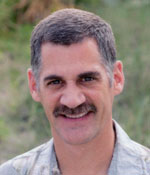
One of my fun additional duties in the Air Force was being an F-15 functional check flight (FCF) pilot. I was one of the guys who got to test fly the airplanes that went through significant maintenance, like engine or flight control changes, or bringing a jet out of hangar queen status. I remember when I first started doing them that I barely had enough gas to conduct all the tests and document the results. Over time, I became more efficient with the test profile and would have a little gas left over to do some extra work in the traffic pattern. 
We flew the FCF jets without any external pylons, stores, or tanks so they were about as drag-free as you could get. Initial takeoff was always a maximum afterburner climb, and as cool as they are to watch and feel from the ground, they are even more fun to experience from the cockpit. In flight we checked for straight rigging, turned off and on all systems, including the flight control computer (which is secondary to the primary hydromechanical system), and even shut each engine down one at a time and verified proper restart. One of the parts of the profile was to climb to between FL350 and FL400 in full afterburner, level off, and leave the engines cooking for our Mach run. We would check for the correct operation of the five stages of afterburner, and also check that the rudder limiter pin would engage above Mach 1.5, limiting pilot input from plus or minus 15 degrees to plus or minus 5 degrees. This was probably the hairiest part of the flight because a fully deflected rudder at that speed would cause the aircraft to depart from controlled flight. Once that part of the profile was done, we normally slowed down and descended to do our other checks.
I always wanted to see how fast I could get an F-15, so one day I decided to use the extra gas that I would have in the traffic pattern for the Mach run. Mach 1.5 came and went. Then Mach 2.0. As I looked around the jet, I saw a beautiful sight of prismatic colors shimmering over the intakes where the sun was being refracted through the shock waves that were forming over the jet. My logbook entry shows a top speed of Mach 2.21 and a groundspeed of 1,384 knots, where I finally had to stop because I was running out of fuel and airspace. To help me slow down I did a zoom climb up to FL500 and received the best surprise of the day. Looking out toward the horizon, I could see the curvature of the brown earth below, a small piece of blue sky above, and above all that I could see black. I was looking into space!
I don’t get to fly that high or that fast anymore, and people often ask me if I miss it. I do. But I appreciate the pursuit of flight enough to really enjoy the view from above in any airplane. Just seeing the cars, cows, tractors, and people in miniature size from the skies above is awe inspiring. So go capture some of that awe for yourself—there is plenty to go around.
Larry Brown of Colorado Springs, Colo., is a retired Air Force F-15 pilot who is using the lessons he learned as a fighter pilot as a GA pilot in his Cessna P210. Brown, who has 2,600 hours total time during his 32 years of flying, also was an instructor pilot and flight examiner in the Air Force T-38 and instructor pilot in the T-52, the military’s version of GA’s Diamond DA40. See previous installments in the Fly like a fighter archive.



